As an SLP who has been blogging for a very long time about ways of incorporating food activities into your speech and language sessions, I have another fun and functional idea that is filled with TONS of language and learning opportunities. If you have a few cookie cutters on hand, (although the more, the better!) get ready to make some healthy snacks while building language skills. If you can’t use food in your setting, no problem! Substitute homemade play-doh (there are a billion recipes you can Google!) and you can still address all the suggested speech and language concepts in this post–minus the tasting/eating part! (Always check for permissions and restrictions related to food allergies/sensitivities before introducing foods in your therapy room/classroom.)
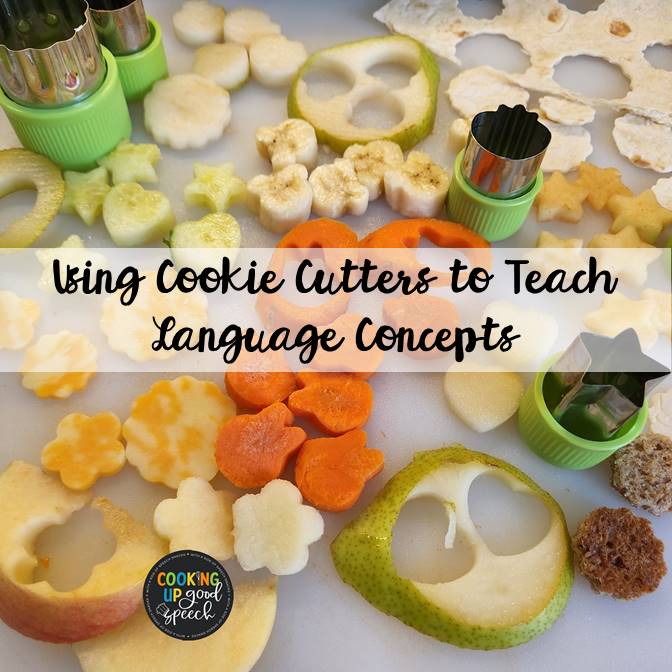
Let’s outline some speech/language concepts that you can target before, during, and after using cookie cutters to create healthy snacks.
1- labeling and requesting: Ask your younger students to tell you which cutter they want. Require them to ask for the cutter before you hand it to them, by providing the correct label and making the request for it. “Which one do you want?” “Can I have the star-shaped cutter?”
2-categorizing/classifying: Ask students to organize the cookie cutters into groups/categories prior to using them to stamp out foods (i.e.- group all the shapes, animals, etc, group by size, group by holiday, group by the sound the cutter starts with, group by favorites). Add more words to the category groups–by generating/brainstorming more words, your students will be building their lexicon, and strengthening their ability to store and retrieve information.
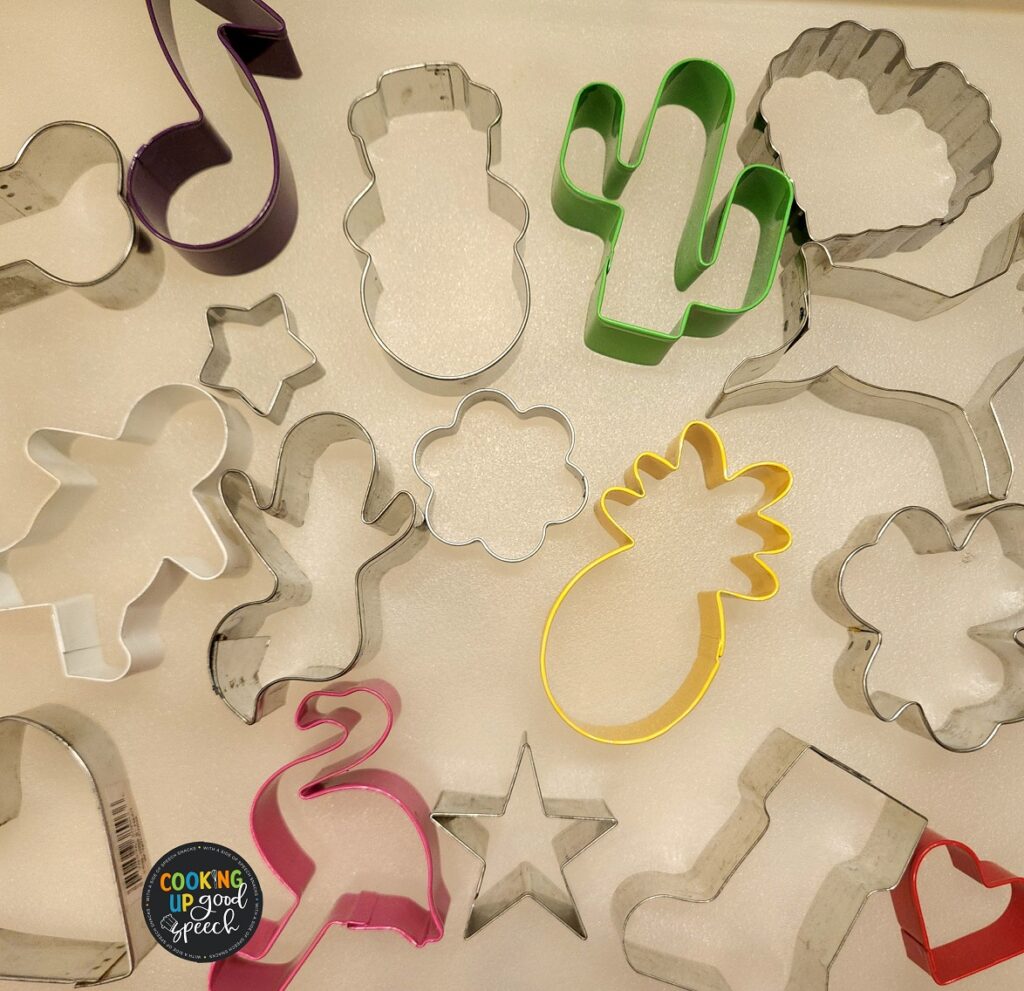
3-descriptive language: Ask students to describe a cookie cutter shape while the rest of the group tries to guess the correct one. (I like to provide my students with a visual (EET chart) for reference whenever I need them to explain/describe.
4-asking questions: Hide one of the cutters in your hand and have your students ask you questions to guess its shape, while you provide yes/no responses.
5-similarities/differences: Choose two cutters and ask your students to explain how they are the same vs different.
6-literacy building- Using letter-shaped cutters, spell out words, practice word families, blends, and consonant/vowel combinations, (CV, VC, CVC, CVCV).
7-articulation: Pick out the letter-shaped cutters that target speech sounds your students are working on. Address the sound in isolation, and syllables, and brainstorm words that contain the sound in the initial, medial, and final positions. (Practice articulation exercises while cutting and pressing out foods with the letter cutters. For every 10 trials of the sound, let them cut out foods with their speech sound cookie cutter.)
8-sentence/story building: Use the various shaped cutters to create sentence examples. Ask your students to pick a cutter out of the pile and create a sentence. Is the sentence simple and lacking in detail? Have them elaborate and expand by including who, what, when, where, why, and how information related to their sentence. Tell a story with the cutters. Pick one cutter to form the topic sentence. Ask each student to add to the story by taking turns picking cutters to continue the storyline.
9-motor strength: Pressing down on the cutters, pushing the foods out of the cutter, and picking up the foods to examine the finished product are all fantastic ways to support fine motor skills in younger students.
10-awareness/exposure/familiarity with healthy food options: “Playing with your food” builds curiosity and lessens reluctance/resistance to try new and unfamiliar foods. You will be exposing your students to foods they have possibly never had the opportunity to try. Small portions and fun shapes will seem less intimidating/overwhelming than a whole/full-sized portion of a particular food.
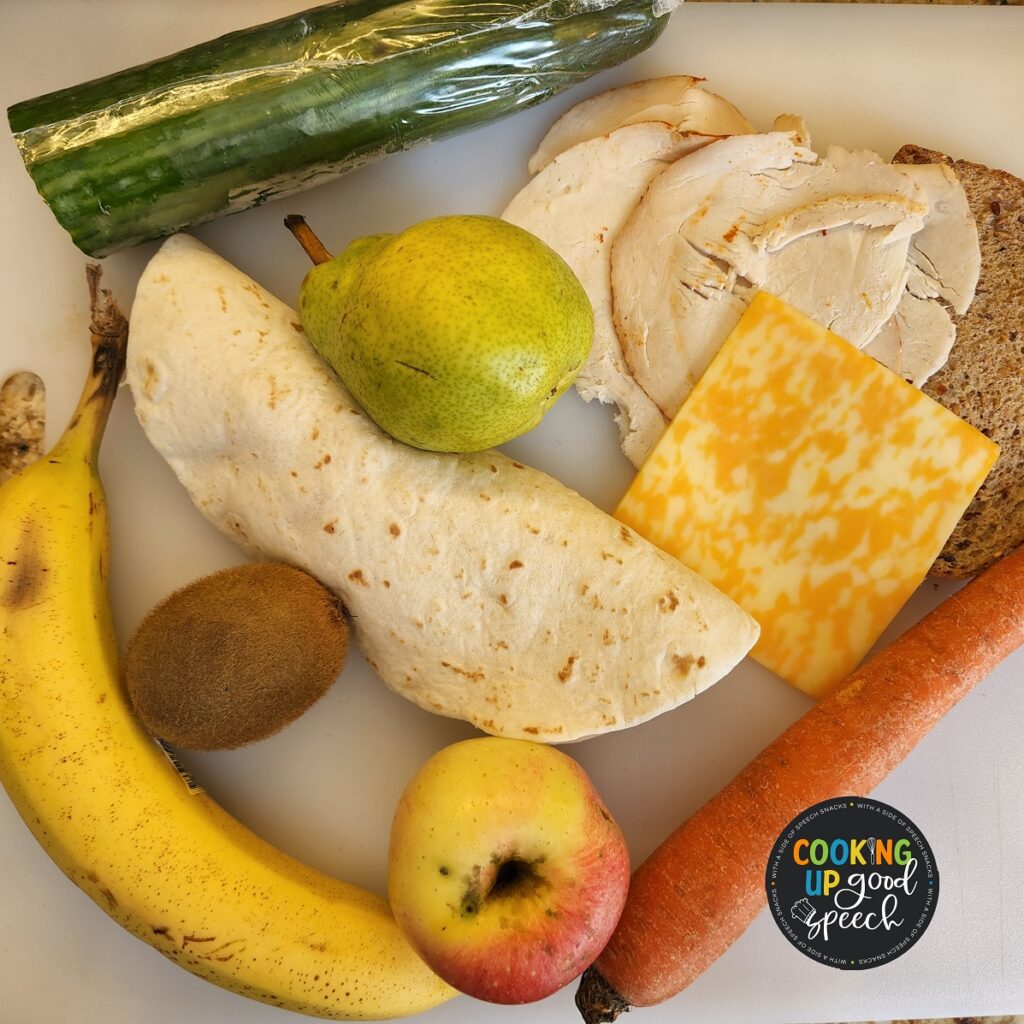
A few foods that work well with cookie cutters include tortillas, sliced bread, apples, cheese, lunch meat, watermelon, cantaloupe, bananas, carrots, pears, and cucumbers. Don’t discard the remaining scraps! Use them to fit other cut-out pieces into (like a puzzle!) and it will encourage your students to not be wasteful–and work on spatial relations!!
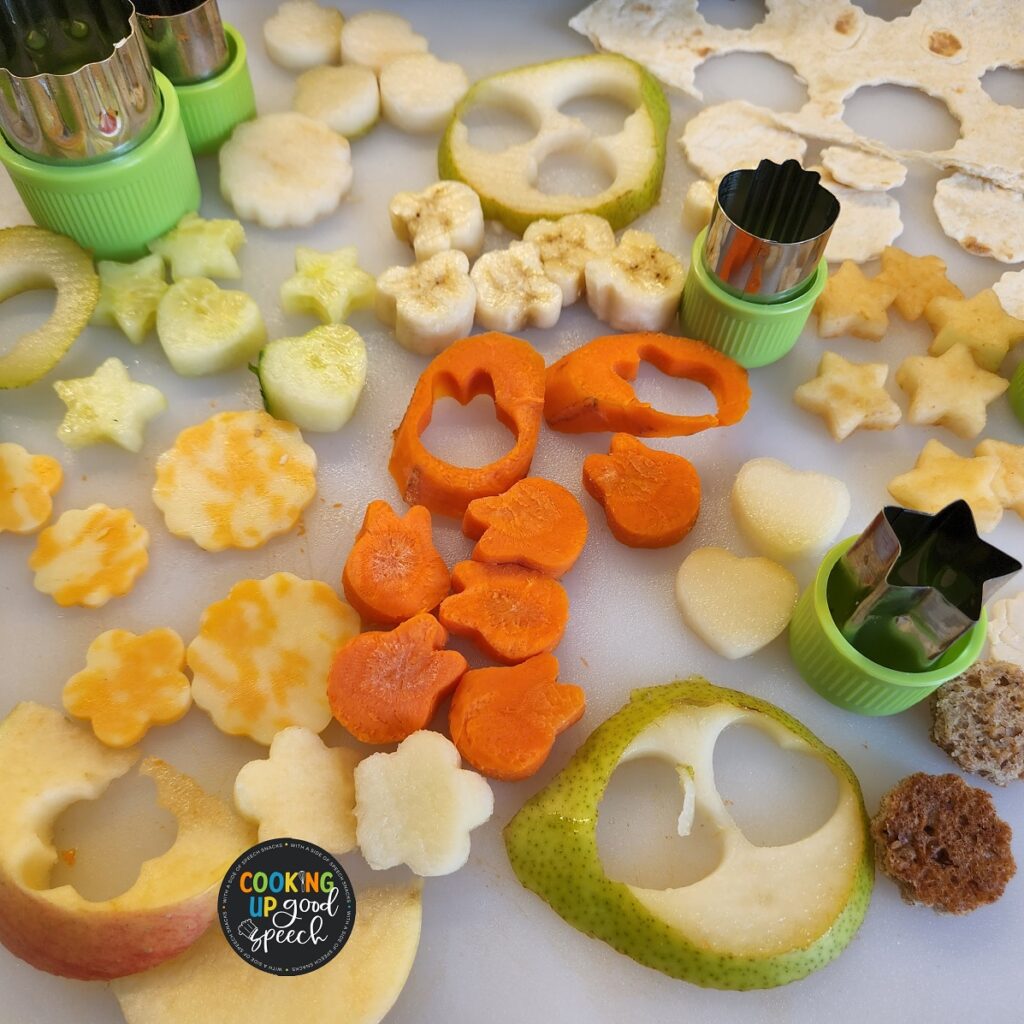
These awesome mini-cutters are in my Amazon store (post contains affiliate links). They are perfect for sampling bite-size pieces of foods that are new and unfamiliar. Plus they are easy to grasp and great for supporting motor skills.
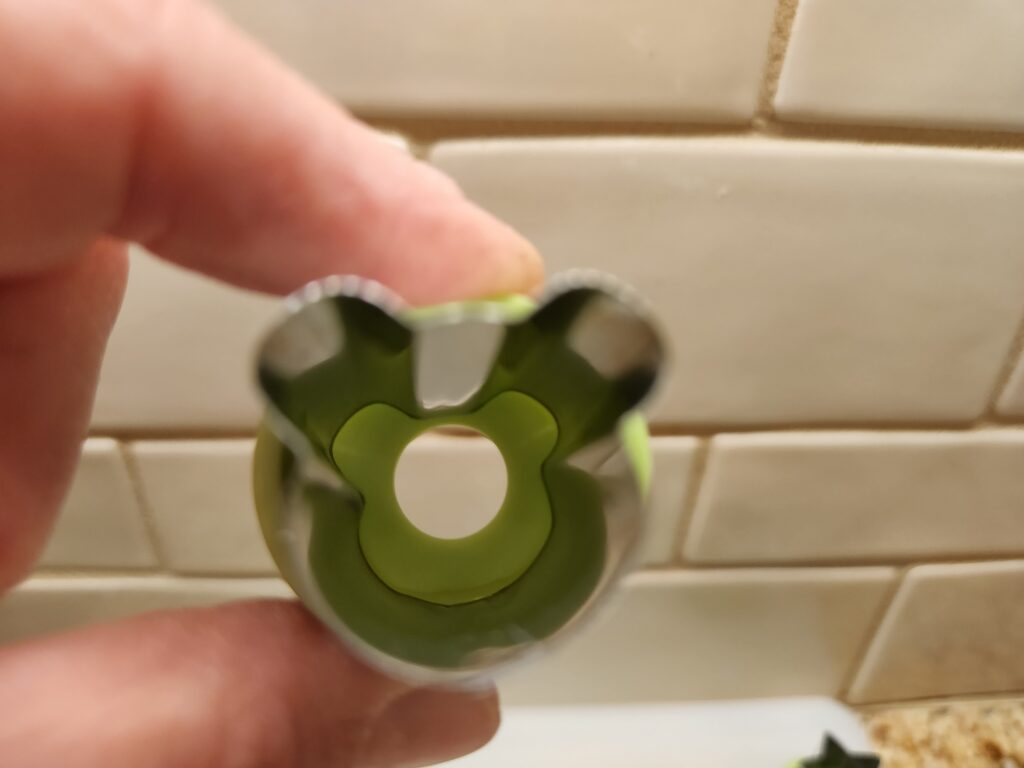
Larger-sized cutters are great for pressing out bread, tortillas, cheese, lunch meats, apples, and pears. Small cutters do a great job stamping out carrots, bananas, and cucumbers.
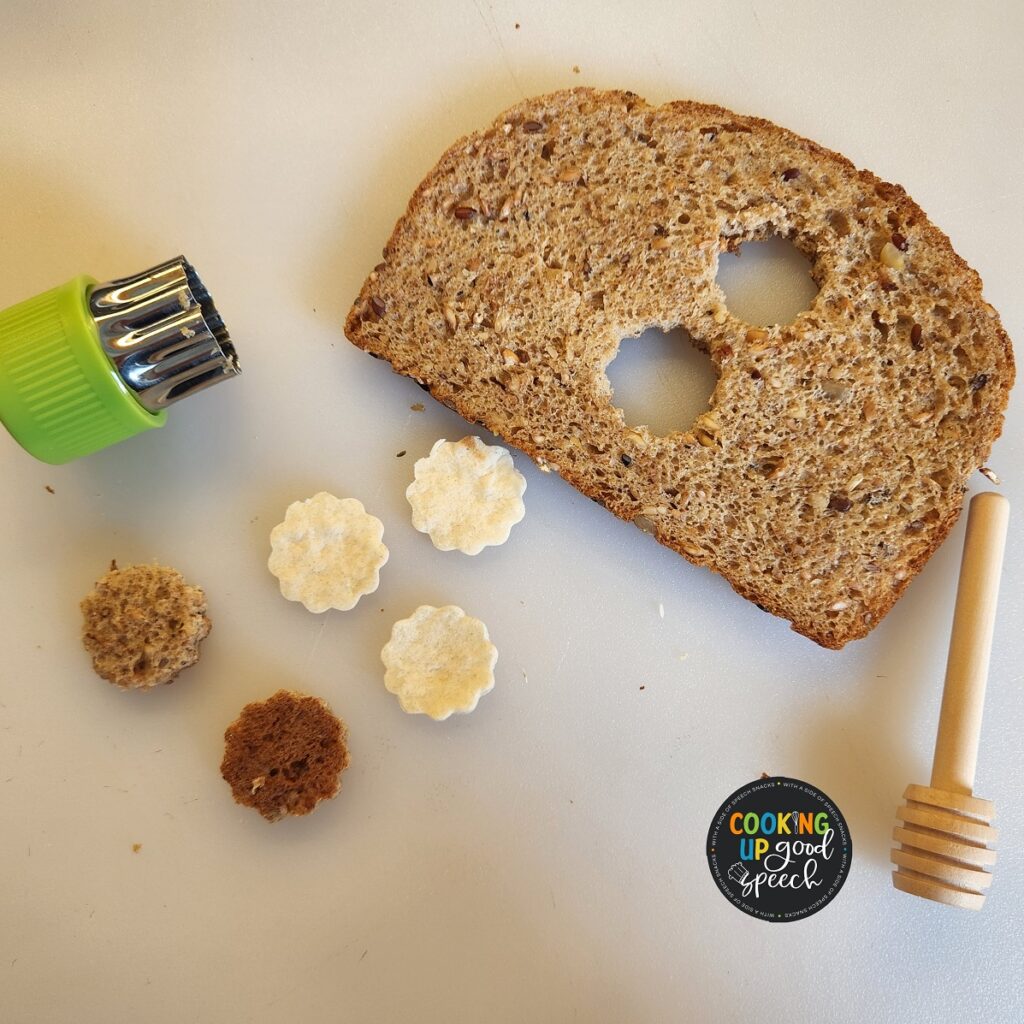
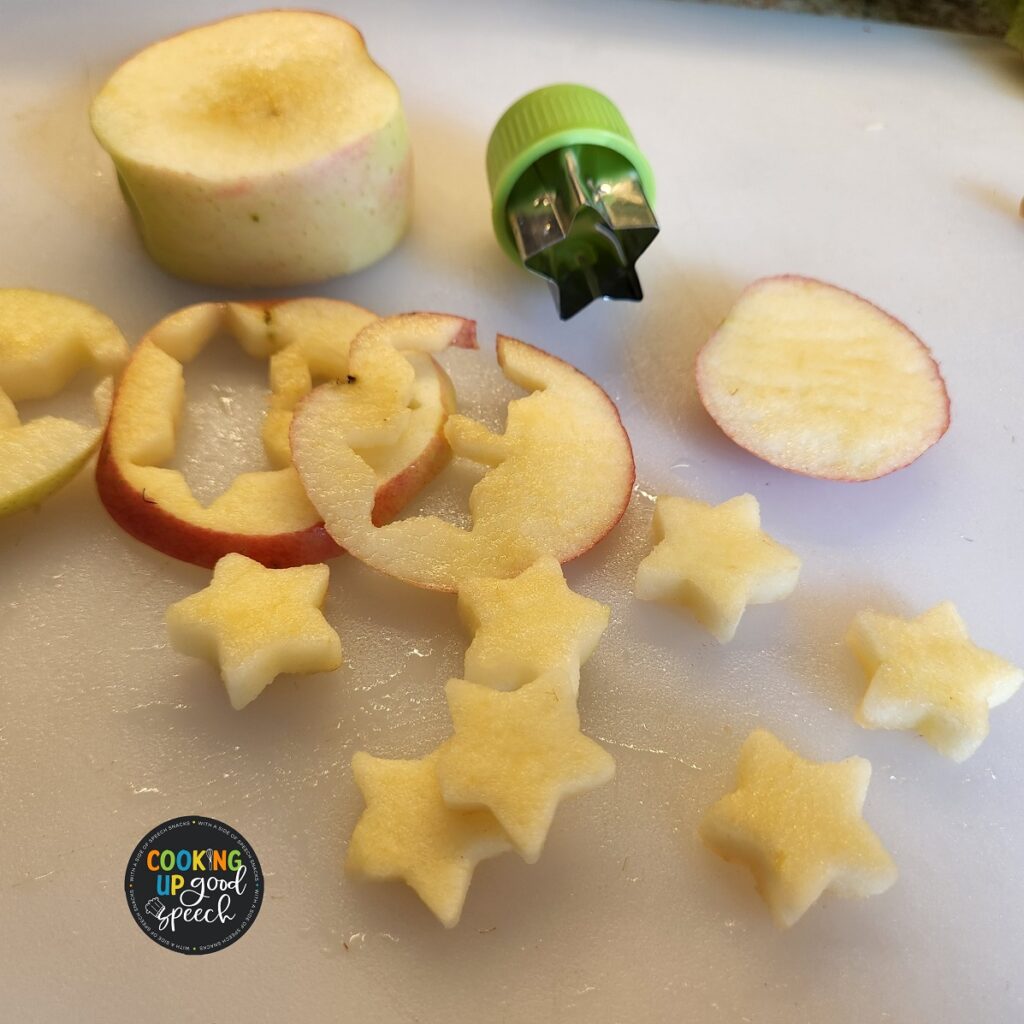
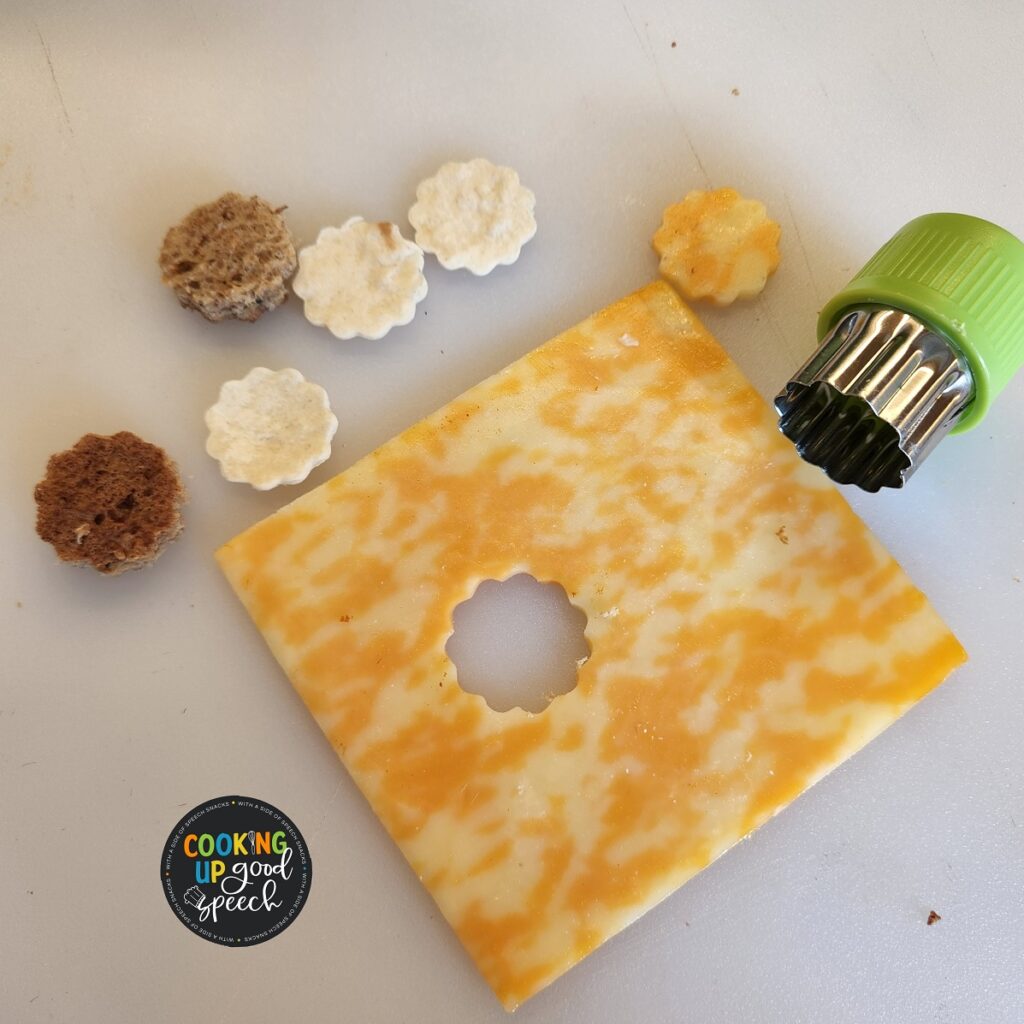
11- Simple Cheese Tortilla: Use the bigger cutters, especially ones with simple shapes, to make mini-sandwiches. Here we made a heart sandwich with a tortilla and cheese. If you are permitted to use a microwave in your setting, melt the tortilla with cheese in the microwave for a few seconds for a cheesy treat–and dip it in some salsa!
TARGETED LANGUAGE CONCEPTS:
- Sequencing steps (first, then, next last)
- recalling 2-3 step direction following
- Turn-taking and conversation skills (while working in a group, preparing the snack together)
- ASKING/ANSWERING QUESTIONS: Do you like tortillas? Can you name other foods that are round? Can you name other dairy foods? Do you know the names of different types of cheese? What other foods contain cheese? Would you make this snack again? How would you make this snack differently? Who do you know that would like this snack?
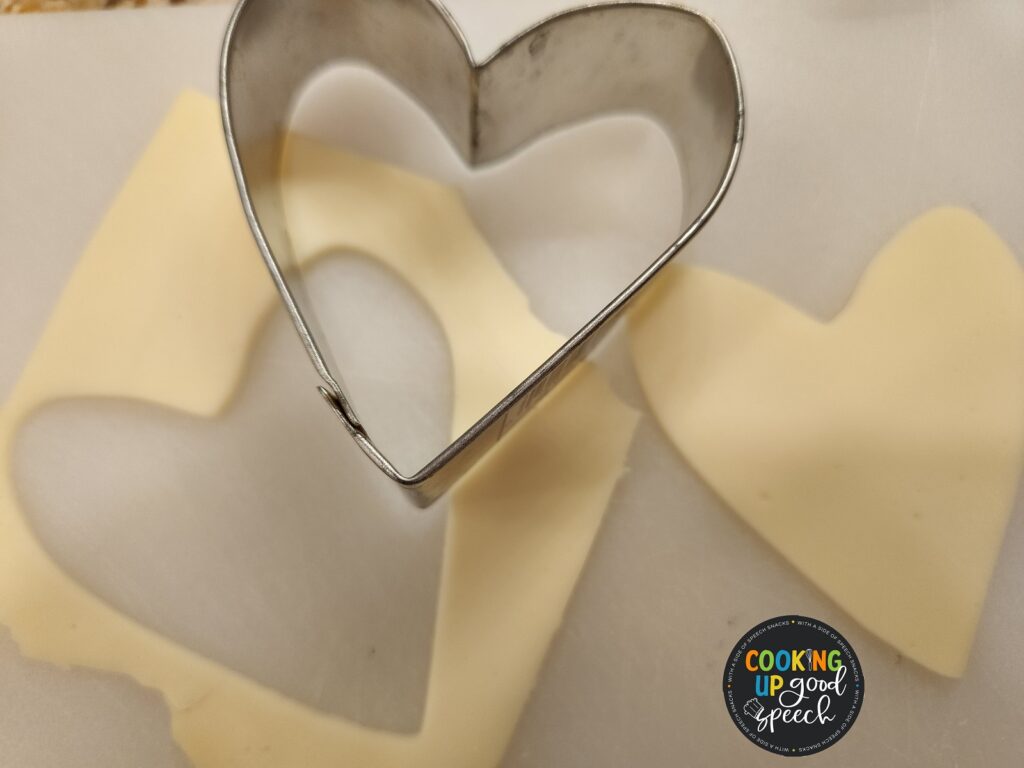
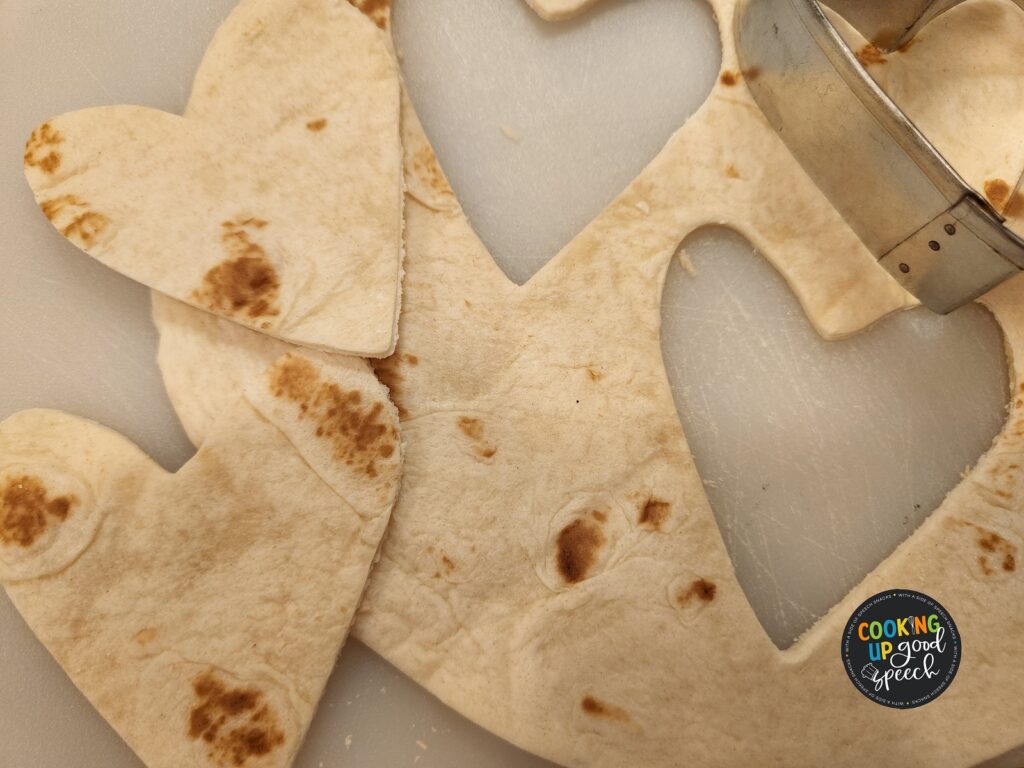
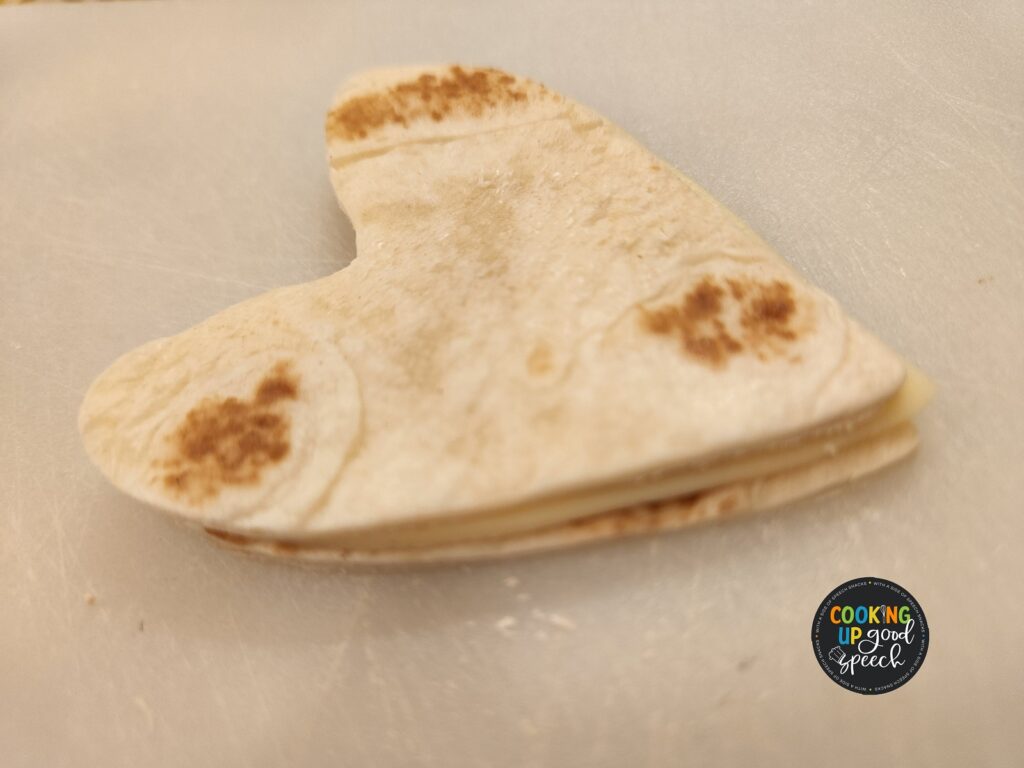
12- Apple-Cinnamon Snack: using a larger cutter (I used a flower here), press out two pieces of bread. Slice an apple and use the flower cutter to cut out an apple slice. Lightly sprinkle the apple with cinnamon and assemble it to form an apple sandwich.
TARGETED LANGUAGE CONCEPTS:
- Sequencing steps (first, then, next last)
- Recalling 2-3 step direction following
- Turn-taking and conversation skills (while working in a group, preparing the snack together)
- ASKING/ANSWERING QUESTIONS: Do you like apples? Can you name other fruits? Can you name other things that are round? Can you name other red foods? Do you know the names of different apple varieties? Describe an apple. (size,shape, color,taste,smell) What can you make from apples? How would you make this snack differently? Who do you know that would like this snack? Why do you think apples are good for you? What is your favorite fruit?
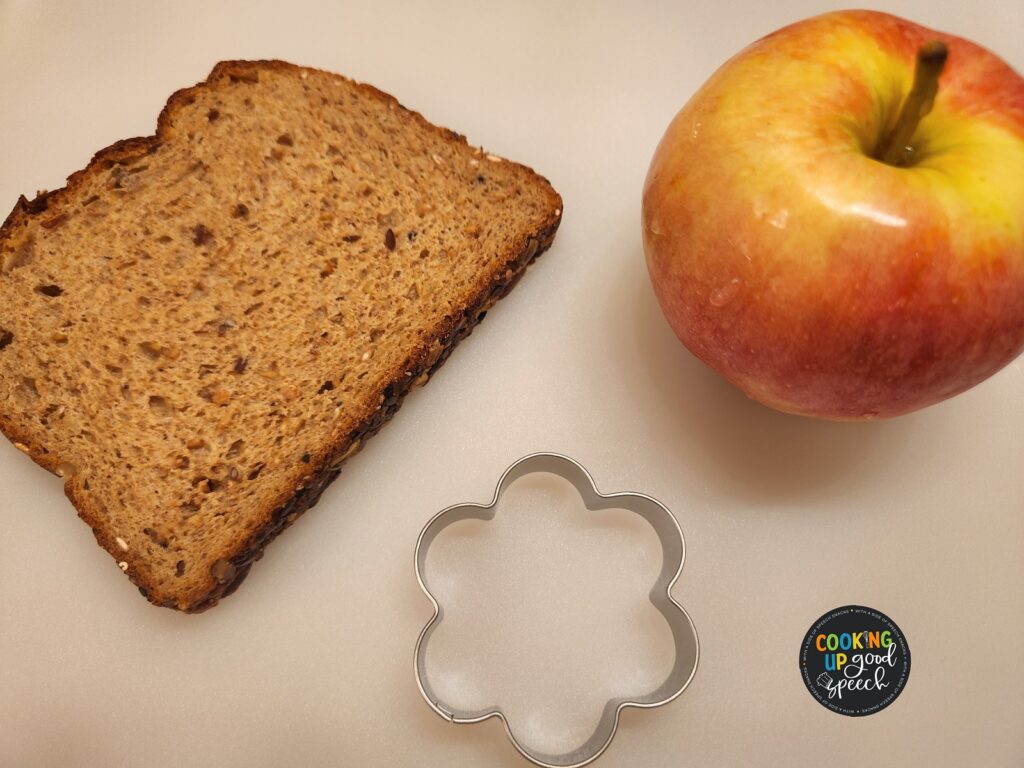
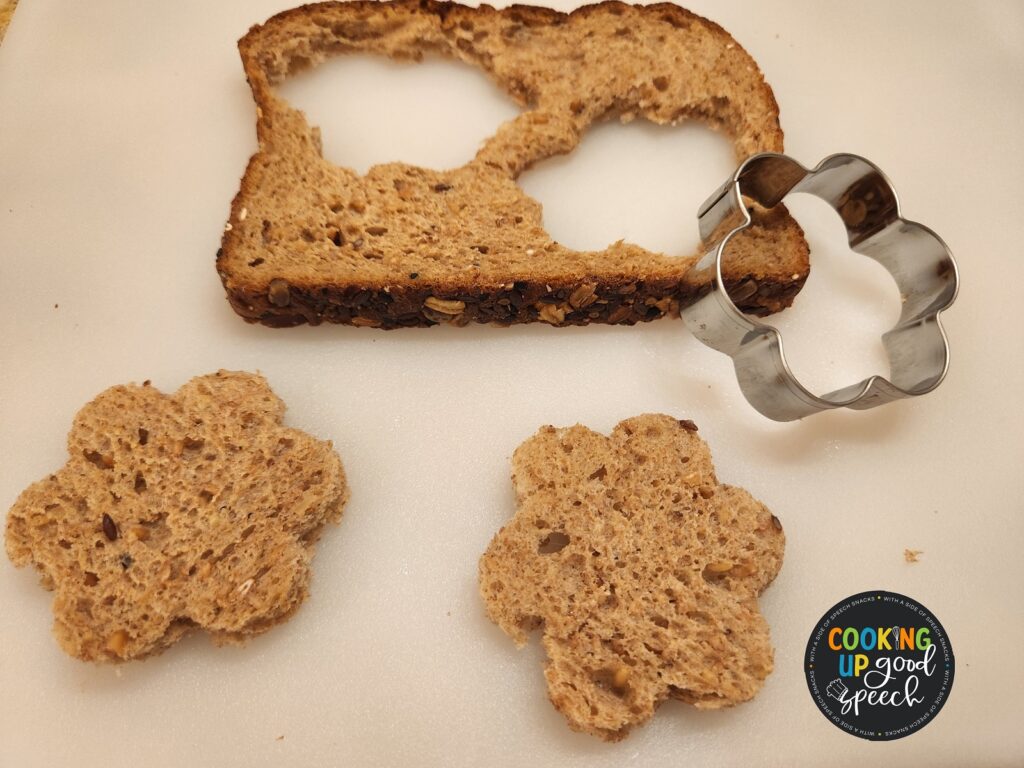
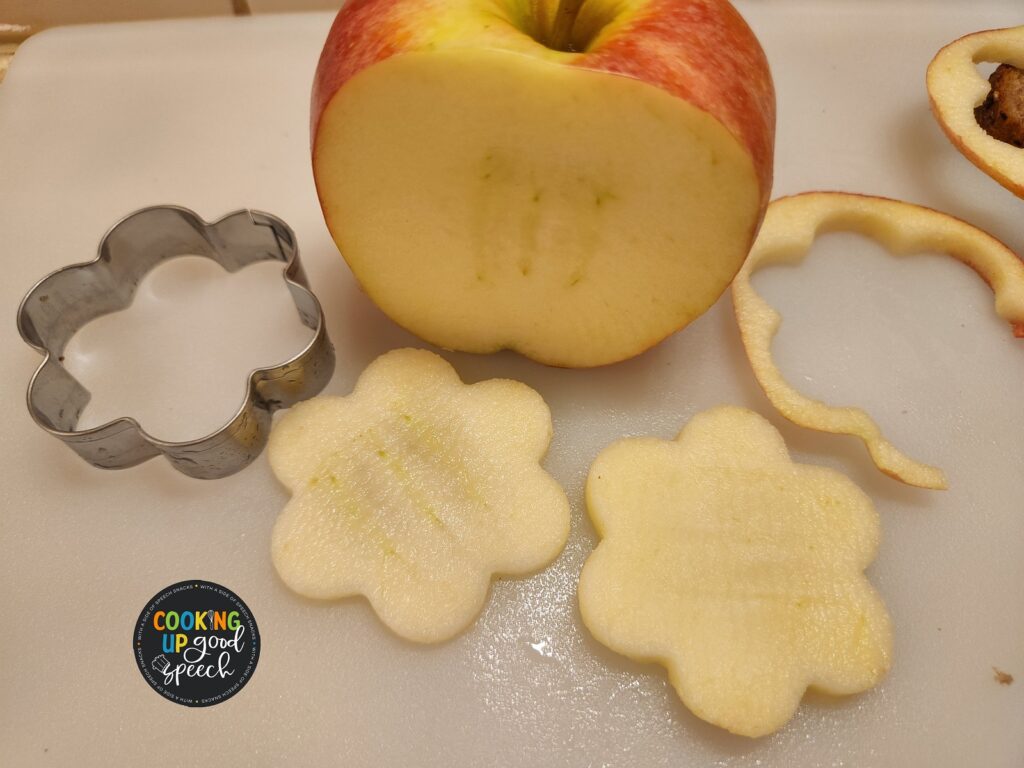
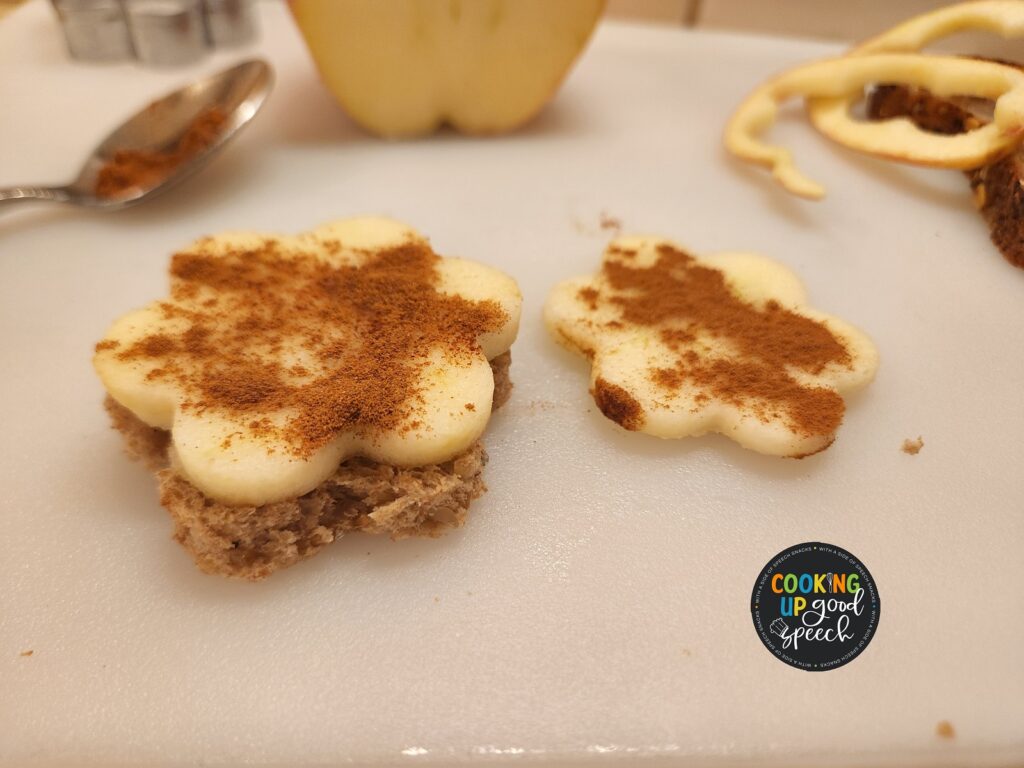
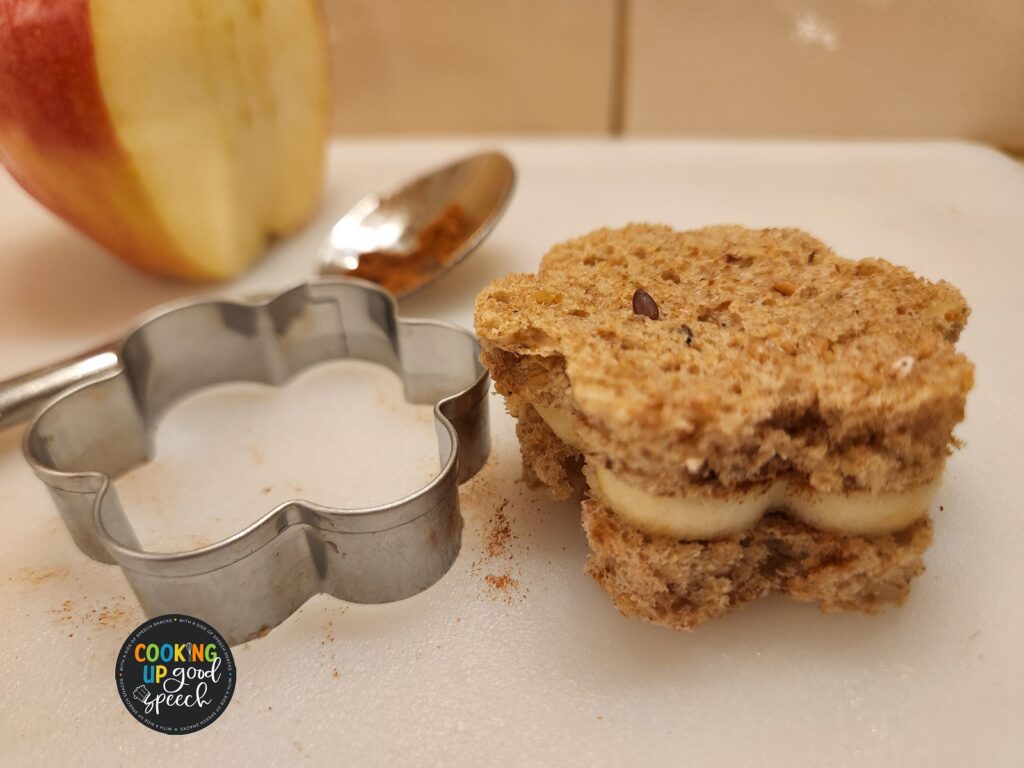











Leave a Reply